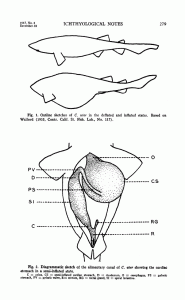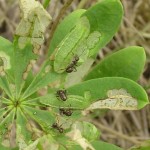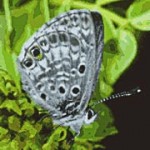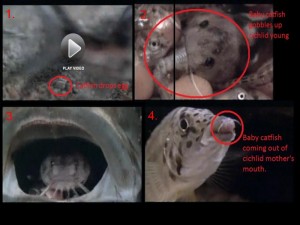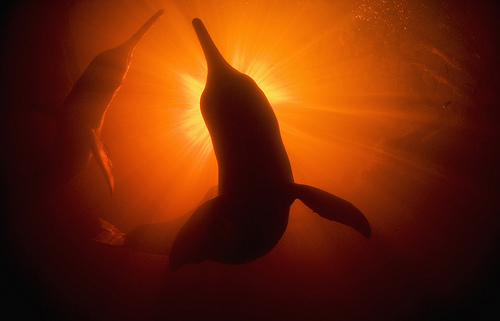Praying mantis, Mantis Religiosa, is known for its insatiable appetite of all the hunting ogres of the insect world. They not only hunt other species for food, they also engage in sexual cannibalism where female devours male during courtship or after copulation.
Female mantis would normally seize the male and begin to eat his head and thorax. Even without a head, the male managed to clamber onto the back of the female and successfully copulate with her. With the remains of the thorax and abdomen, the male stayed attached to the female for several hours. Eventually the male would relax his clasp on the female, who finished her meal, leaving only the wings and harder pieces of chitin behind. Surprisingly, during this process the male actually showed great sexual excitement. Milius (1999) in her “Who’s Dying for Sex?” showed Michael R. Maxwell’s observation on the distinct difference in mating duration between two male praying mantises, one with a head and the other without. The former mates for 4 hours on the average while the latter can mate up to 24 hours.
WOW! So how can the headless male not be the greatest lover to the female?
Now the question is why does headless male praying mantis still able to mate?
In mantids, copulatory movements are regulated by masses of nerve tissue in the abdomen instead of the brain. Males mate more efficiently when decapitated as its head has a nerve center that inhibits mating until a female grasps it. When this nerve is removed, it resulted in a loss of control and repeated copulation occurred. Therefore, male continues to copulate while he is being devoured and perhaps, more aggressively!
To me, this is definitely a classic example in which killing the male helps to stimulate reproductive act, isn’t it?
References
Website
“Headless Males Make Great Lovers and Other Unusual Natural Histories” by Marty Crump. University of Chicago Press, 2005. URL: http://www.press.uchicago.edu/Misc/Chicago/121992.html (accessed on 1st April 2010).
Journals
Milius, S. (1999, November 13). Who’s Dying for Sex?. Science News. 156(20): 312 – 314.
Roeder, K. D. (1935, October). An Experimental Analysis of the Sexual Behavior of the Praying Mantis (Mantis religiosa L.). Biological Bullentin. 69(2): 203 – 220.
Video
“Female praying mantis eats male after mating” by dissogtg. YouTube Channel, 9th July 2006. URL: http://www.youtube.com/watch?v=KYp_Xi4AtAQ (accessed on 1st April 2010)





